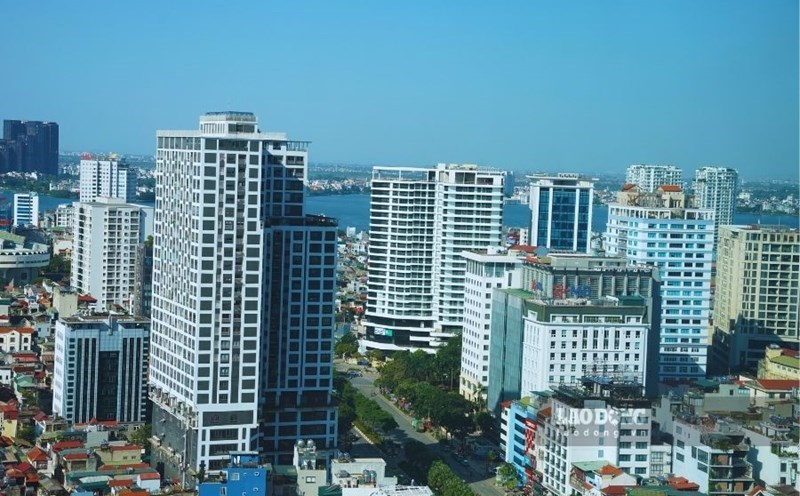Apartment prices in Hanoi continue to set new levels. According to the market report for the third quarter of 2025 published by Savills Vietnam, the average primary selling price has now reached 101 million VND/m2. Notably, despite record high prices, the market is still absorbing well.
Savills assessed the third quarter of 2025 as a period of strong recovery for the Hanoi apartment market. Fundamental factors such as infrastructure have been significantly improved, planning has been removed, and real demand for housing especially from the high-income group is creating new momentum for the market. In the quarter, new supply reached more than 6,300 units, bringing the total supply in the first 9 months of the year to more than 20,000 apartments, a level considered outstanding compared to Ho Chi Minh City in the same period.
The absorption rate of new projects has reached more than 80%, of which most transactions come from the high-end segment. "Many people ask where the liquidity of apartments come from with this price? However, when looking at the absorption rate, it can be seen that the market is still liquid and buyers still accept high prices. This reflects that the effect of increasing income and accumulating assets in Hanoi is still very strong, said Ms. Do Thu Hang - Senior Director of Savills Hanoi Research and Consulting Department.
The reason for the average price climbing to 101 million VND/m2 is mainly due to the decline of the class A apartment segment. If in previous years, mid-range apartments (class B) accounted for the majority, by the third quarter of 2025, a series of high-end projects will launch strong products, focusing on the area within Ring Road 3 - where infrastructure, utilities, services and the highest level of urbanization completion in the capital are located. The dominance of the high-end segment has changed the supply structure, pushing up the general price level, and narrowing the market share of the B class. Meanwhile, the affordable segment (class C) continues to almost disappear from the market.
In the secondary market, apartment prices increased by an average of 39% over the same period last year, with many areas considered a new "hot spot" despite the market having experienced fluctuations in legality and credit over the past 3 years. The transaction structure by value also shows a clear shift: Apartments over VND4 billion account for the majority of sales, while there are no apartments under VND2 billion in the primary market.
Although prices are anchored at record levels, Savills predicts that the possibility of the market cooling down in the short term is very low.
Ms. Do Thu Hang - Senior Director, Research & Consulting Services, Savills Hanoi - commented: "For the development of commercial apartments, in addition to construction costs, land costs also contribute a key proportion as well as profit expectations in determining the cost and selling price of apartments. If the cost problem is resolved appropriately, the market can add more affordable products to meet the great needs of urban people".
According to Ms. Hang, in general, Hanoi real estate in the coming period will witness a clear differentiation by area and project quality. piloting housing projects, along with reforms in institutions and infrastructure investment, especially in areas outside the 3 - 3.5 belt, are expected to have a positive impact on price levels. However, this is a complicated process, affected by many factors.
Meanwhile, a representative of the Vietnam Association of Realtors (VARS) commented: Real estate prices will continue to increase as cheap capital continues to be pumped into the economy, boosting investment demand while supply is still limited. The scarcity of land funds and the sharp increase in land and material costs have forced investors to maintain a high-end segment development strategy to ensure profits. This segment is still well absorbed thanks to the group of customers with financial capacity and a long-term accumulation trend".











